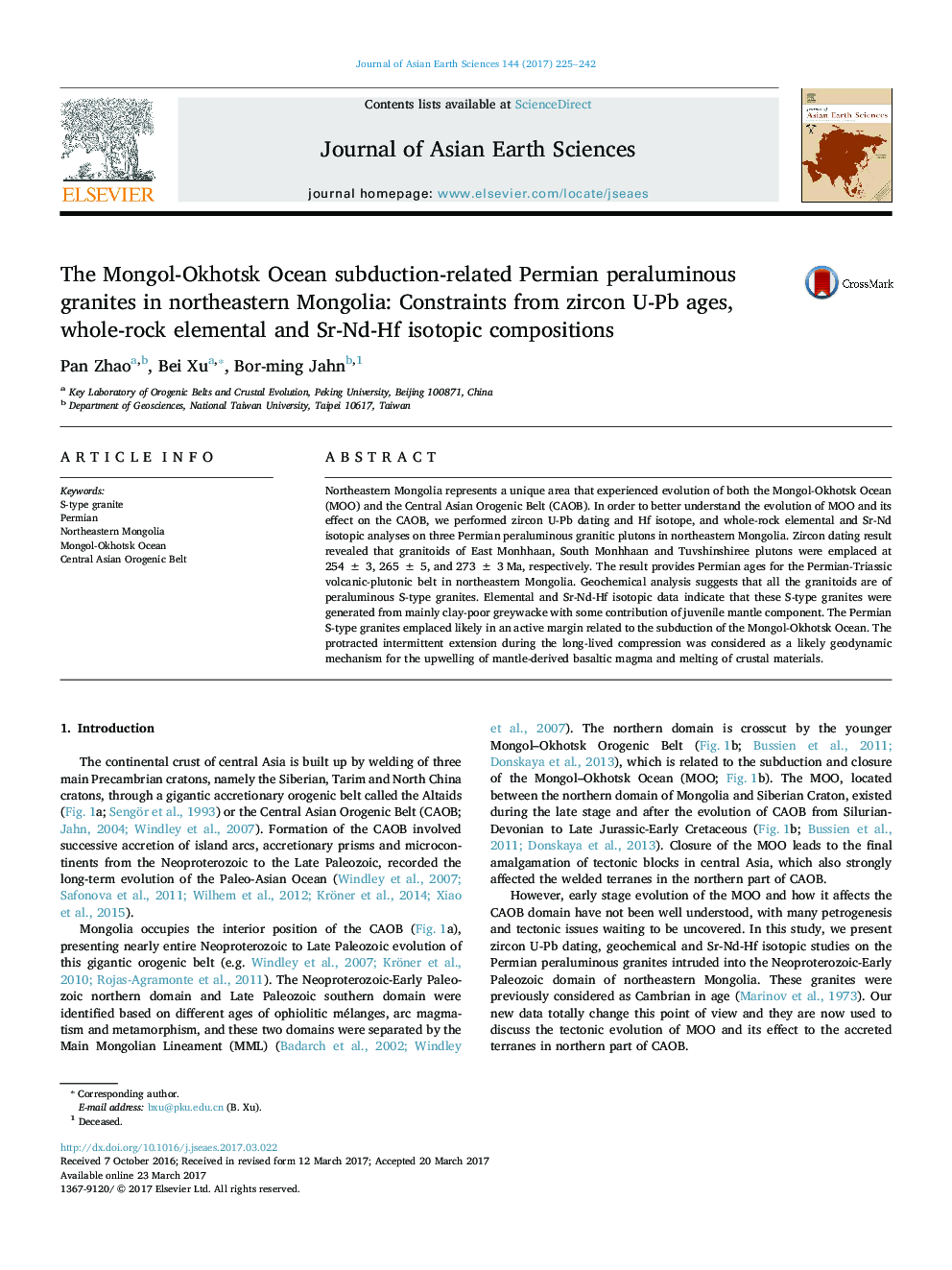| Article ID | Journal | Published Year | Pages | File Type |
|---|---|---|---|---|
| 5785980 | Journal of Asian Earth Sciences | 2017 | 18 Pages |
â¢Permian ages were revealed for peraluminous granites in northeastern Mongolia.â¢Melting of mixed metasedimentary and mantle-derived basaltic rocks was proposed.â¢S-type granites are related to the subduction of the Mongol-Okhotsk Ocean.
Northeastern Mongolia represents a unique area that experienced evolution of both the Mongol-Okhotsk Ocean (MOO) and the Central Asian Orogenic Belt (CAOB). In order to better understand the evolution of MOO and its effect on the CAOB, we performed zircon U-Pb dating and Hf isotope, and whole-rock elemental and Sr-Nd isotopic analyses on three Permian peraluminous granitic plutons in northeastern Mongolia. Zircon dating result revealed that granitoids of East Monhhaan, South Monhhaan and Tuvshinshiree plutons were emplaced at 254 ± 3, 265 ± 5, and 273 ± 3 Ma, respectively. The result provides Permian ages for the Permian-Triassic volcanic-plutonic belt in northeastern Mongolia. Geochemical analysis suggests that all the granitoids are of peraluminous S-type granites. Elemental and Sr-Nd-Hf isotopic data indicate that these S-type granites were generated from mainly clay-poor greywacke with some contribution of juvenile mantle component. The Permian S-type granites emplaced likely in an active margin related to the subduction of the Mongol-Okhotsk Ocean. The protracted intermittent extension during the long-lived compression was considered as a likely geodynamic mechanism for the upwelling of mantle-derived basaltic magma and melting of crustal materials.
Graphical abstractDownload high-res image (269KB)Download full-size image
